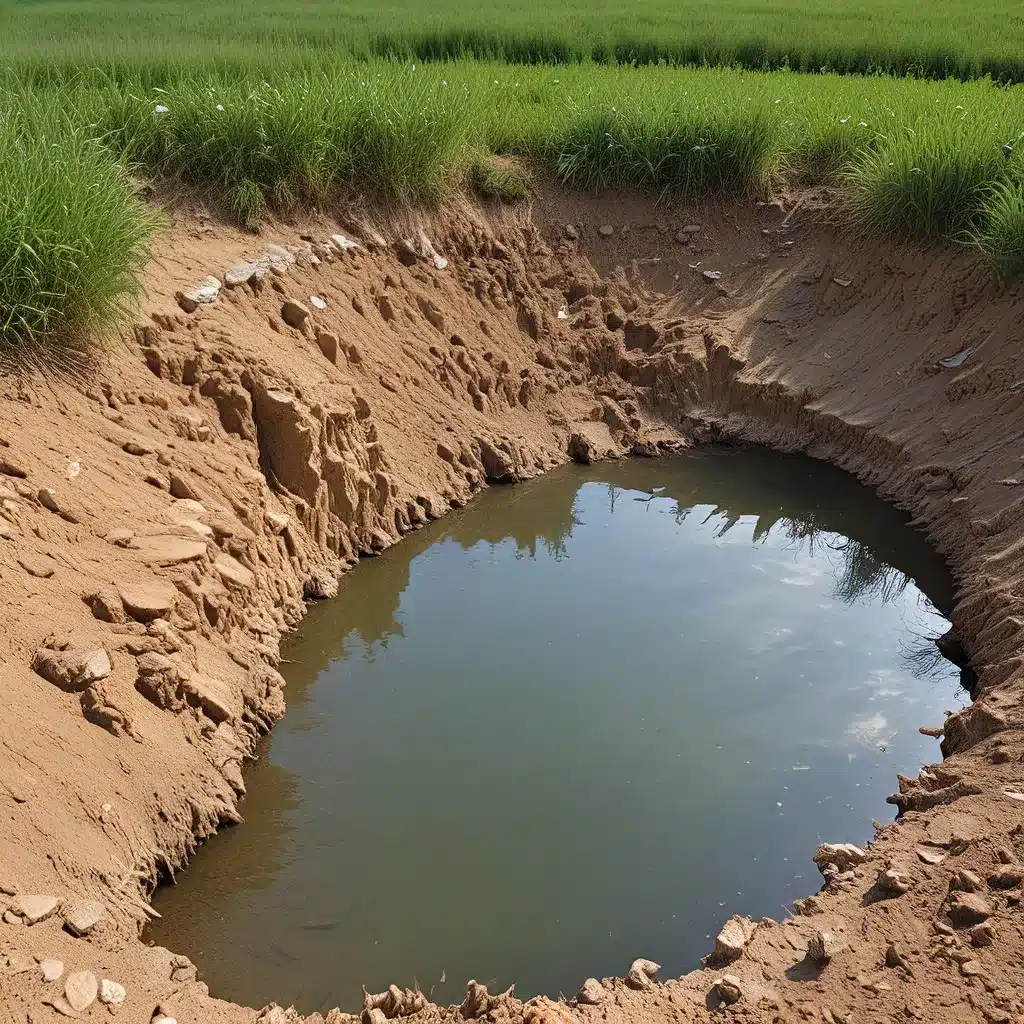
Ah, groundwater remediation – the unsung hero of the environmental world. While it may not have the glitz and glamour of solar panel installations or the public fascination of electric vehicles, this lesser-known field is quietly working behind the scenes to tackle one of our planet’s most pressing issues: contaminated groundwater.
The Complexity of Groundwater Contamination
Groundwater, that vast subterranean reservoir that quenches the thirst of millions, is under constant threat from a myriad of pollutants. From industrial spills to agricultural runoff, the list of culprits is long and varied. But the true challenge lies in the sheer complexity of these contaminants and their behavior within the intricate underground ecosystem.
You see, groundwater is like a labyrinth – a maze of porous rock, sediment, and fractured aquifers that can trap and conceal all sorts of nasty surprises. Some contaminants, like heavy metals, tend to cling to soil particles, while others, like pesky pesticides, can dissolve and spread far and wide. And then there are the elusive “forever chemicals” known as PFAS, which seem to defy conventional treatment methods.
Unraveling this underground puzzle requires a special kind of expertise – one that combines scientific prowess, creative problem-solving, and a healthy dose of persistence. Luckily, the innovators in groundwater remediation are up for the challenge.
Innovative Techniques: Tackling the Toughest Contaminants
In the world of groundwater remediation, there’s no one-size-fits-all solution. Different contaminants require different approaches, and the most effective strategies often involve a combination of cutting-edge techniques. Let’s dive into some of the most promising methods that are shaking up the industry.
Activated Carbon Adsorption: The Powerhouse of Purification
Activated carbon, with its vast network of pores and remarkable surface area, has long been a star player in the world of water treatment. But when it comes to tackling those pesky PFAS compounds, this material really shines. By physically trapping PFAS molecules on its surface, activated carbon can effectively remove these “forever chemicals” from groundwater, offering a potent solution to a persistent problem.
Membrane Filtration: A Molecular Sieve for Contaminants
Imagine a barrier so precise that it can selectively block the passage of PFAS molecules while allowing water to flow freely – that’s the power of membrane filtration. These advanced systems, like reverse osmosis and nanofiltration, act as molecular sieves, preventing the escape of PFAS and other harmful contaminants. It’s a game-changer in the fight for clean, safe groundwater.
Ion Exchange Resins: Targeted Contaminant Removal
Sometimes, a more surgical approach is necessary, and that’s where ion exchange resins come into play. These versatile materials operate by replacing ions in the groundwater with PFAS molecules, allowing for highly targeted and efficient removal of these persistent pollutants. It’s like a specialized extraction team, meticulously plucking out the troublemakers and leaving the good stuff behind.
Advanced Oxidation Processes: Breaking Down the Unbreakable
But what if we could just… make the problem disappear? That’s the idea behind advanced oxidation processes, which use powerful oxidants like ozone or hydroxyl radicals to chemically transform PFAS and other contaminants into less harmful byproducts. It’s like a groundwater exorcism, ridding the system of these stubborn, unwelcome guests.
The Power of Hybrid Approaches
Of course, the true magic happens when we combine these innovative techniques, creating hybrid systems that leverage the strengths of multiple methods. By tailoring the right blend of treatments to the specific groundwater composition and contaminant profile, engineers can achieve unprecedented levels of removal efficiency.
Imagine a groundwater remediation system that starts with activated carbon adsorption to capture the bulk of the PFAS, followed by membrane filtration to polish the water and ion exchange resins to mop up any stragglers. And just for good measure, a final advanced oxidation process to ensure those contaminants don’t come back to haunt us. It’s like a groundwater purification symphony, with each instrument playing its part in harmony.
Optimizing the Process with Technology
But the innovation doesn’t stop there – groundwater remediation is also getting a major tech boost. Enter the Transcend Design Generator, a powerful tool that uses advanced algorithms and proprietary databases to help engineers design and optimize their PFAS treatment processes. By simulating the performance of different techniques and sizing the necessary equipment, this digital wizard can ensure that every groundwater remediation project is tailored for maximum efficiency and effectiveness.
It’s like having a team of expert consultants in your back pocket, always ready to provide insights and guidance on the latest advancements in the field. And with the ability to generate detailed documentation and specifications, the Transcend Design Generator takes the guesswork out of implementation, making it easier than ever to bring these innovative solutions to life.
The Future of Groundwater Remediation
As we look to the future, the potential for groundwater remediation is truly limitless. With each new breakthrough in technology and the unwavering dedication of the innovators in this field, we’re inching closer and closer to a world where contaminated groundwater is a thing of the past.
Imagine a future where every drop of groundwater is pure, crystal-clear, and safe to drink. Where aquifers, long neglected and polluted, are restored to their former glory, teeming with life and sustaining thriving ecosystems. And where the spectre of PFAS and other persistent contaminants has been banished, no longer haunting our underground water reserves.
It’s a future that’s well within our grasp, but it’s going to take a lot of hard work, creativity, and a willingness to think outside the box. Luckily, the pioneers of groundwater remediation are more than up for the challenge. So let’s roll up our sleeves, dive into the depths of the Earth, and unlock the secrets that will pave the way to a cleaner, healthier tomorrow.


